
King George Island is the largest of the South Shetland Islands, lying 120 km off the coast of Antarctica in the Southern Ocean. The island was named after King George III.
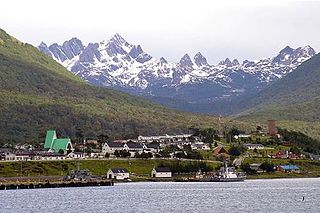
Puerto Williams is a city, port and naval base on Navarino Island in Chile, and is also the southernmost populated settlement in the world. It faces the Beagle Channel. It is the capital of the Chilean Antarctic Province, one of four provinces in the Magellan and Chilean Antarctica Region, and administers the communes of Chilean Antarctic Territory and Cabo de Hornos. It has a population of 2,874, including both naval personnel and civilians. Puerto Williams claims the title of world's southernmost city. The settlement was founded in 1953, and was first named Puerto Luisa. The town was later named after John Williams Wilson, a British man who founded Fuerte Bulnes, the first settlement in the Strait of Magellan. It has served primarily as a naval base for Chile. The Chilean Navy runs the Guardiamarina Zañartu Airport and hospital, as well as nearby meteorological stations. Since the late 20th century, the number of navy personnel has decreased in Puerto Williams and the civilian population has increased. In that period, tourism and support of scientific research have contributed to an increase in economic activity.

Base General Bernardo O'Higgins Riquelme, also Base Libertador General Bernardo O'Higgins Riquelme, or shortly Bernardo O'Higgins, named after Bernardo O'Higgins, is a permanently staffed Chilean research station in Antarctica and the capital of Antártica Commune. It lies at an elevation of 13 m, about 30 km south-west of Prime Head, the northernmost point of the Antarctic Peninsula, at Cape Legoupil.
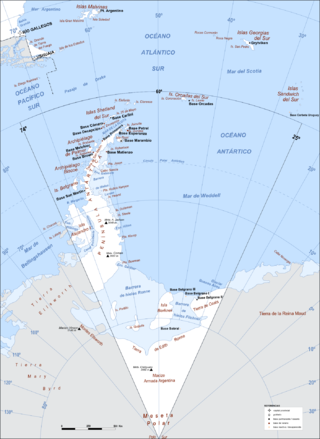
Argentine Antarctica is an area on Antarctica claimed by Argentina as part of its national territory. It consists of the Antarctic Peninsula and a triangular section extending to the South Pole, delimited by the 25° West and 74° West meridians and the 60° South parallel. This region overlaps with British and Chilean claims in Antarctica. None of these claims have widespread international recognition.

Multiple governments have set up permanent research stations in Antarctica and these bases are widely distributed. Unlike the drifting ice stations set up in the Arctic, the current research stations of the Antarctic are constructed either on rocks or on ice that are fixed in place.

Villa Las Estrellas is a permanently inhabited outpost on King George Island within the Chilean Antarctic claim, the Chilean Antarctic Territory, and also within the Argentine and British Antarctic claims.

Base Presidente Eduardo Frei Montalva is the most important Antarctic base of Chile. It is located at Fildes Peninsula, an ice-free area, in front of Fildes Bay, at the west end of King George Island, South Shetland Islands. Situated alongside the Escudero Station and only 200 metres (660 ft) from the Russian Bellingshausen Station, it is at an altitude of 10 metres (33 ft) above sea-level. The base is located in the Chilean commune of Antártica, which is the Antarctic territory claimed by Chile.

The Teniente Luis Carvajal Villaroel Antarctic Base is a seasonal Chilean Antarctic base on the south-west tip of Adelaide Island, in Graham Land off the west coast of the Antarctic Peninsula. The nearest land is the Magallanes – the station is in the Antarctic territory claimed by Chile.

The Chilean Antarctic Territory, or Chilean Antarctica, is a part of West Antarctica and nearby islands claimed by Chile. It comprises the region south of 60°S latitude and between longitudes 53°W and 90°W, partially overlapping the Antarctic claims of Argentina and of the United Kingdom. It constitutes the Antártica commune of Chile.

The Comandante Ferraz Antarctic Station is a permanent Antarctic research station named after the Brazilian Navy Commander Luís Antônio de Carvalho Ferraz (1940–1982), who visited Antarctica many times with the British exploration team and managed to convince his government to create a self-guided Brazilian Antarctic Program.
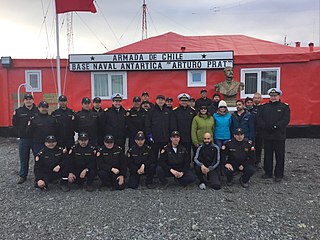
Captain Arturo Prat Base is a Chilean Antarctic research station located at Iquique Cove, Greenwich Island in the South Shetland Islands, Antarctica.
Professor Julio Escudero Base is a permanent Chilean Antarctic research base. It is located on King George Island near Base Presidente Eduardo Frei Montalva and the civilian settlement of Villa Las Estrellas. It lies within the Antártica Chilean commune funded by the Antarctic Institute of the Ministry of Foreign Relations.
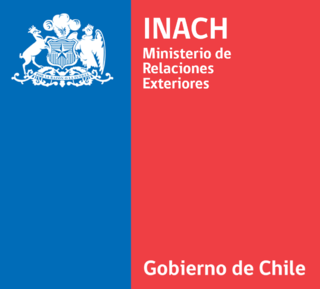
The Chilean Antarctic Institute, known as INACH, is a public service institution in charge of managing and coordinating scientific activities in the Chilean Antarctic Territory. It is the national Antarctic operator and has an active role in Antarctic affairs.

Juan Carlos I Antarctic Base, named after the former king of Spain, Juan Carlos I, is a seasonal scientific station operated by Spain, opened in January 1988. Situated on Hurd Peninsula, Livingston Island in the South Shetland Islands, Antarctica.

Risopatrón Base, also Luis Risopatrón Base, is a small Chilean Antarctic research base in the northwest of Robert Island in the South Shetland Islands, Antarctica situated on the isthmus linking Coppermine Peninsula to Alfatar Peninsula and bounded by Carlota Cove to the north and Coppermine Cove to the south. Established as a refuge in 1949 and opened as a base in 1954, the facility supports summer research in geology, geophysics and terrestrial biology.
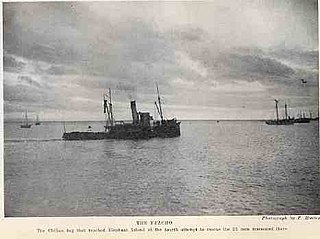
The Yelcho was built in 1906 by the Scottish firm Geo. Brown and Co. of Greenock, on the River Clyde for towage and cargo service of the Chilean Sociedad Ganadera e Industrial Yelcho y Palena, Puerto Montt. In 1908 she was sold to the Chilean Navy and ordered to Punta Arenas as a tug and for periodic maintenance and supply of the lighthouses in that region.

Gabriel de Castilla Base is a Spanish research station located on Deception Island, South Shetland Islands, Antarctica. The station was constructed in late 1989. The station is named for Gabriel de Castilla, a 17th-century Spanish navigator and, according to some reports, the first person to sight the mainland of Antarctica.
The Collins base is an Antarctic shelter located in the Collins Glacier that is in the Collins Bay in the Fildes Peninsula, King George Island. It was inaugurated at the 2006-2007 season and is administrated by the Instituto Antártico Chileno (INACH).

Doctor Guillermo Mann Base is a Chilean Antarctic research base. It is located on the east side of Cape Shirreff on Ioannes Paulus II Peninsula on Livingston Island in the South Shetland Islands off the Antarctic peninsula.

German Antarctic Receiving Station or GARS O'Higgins is a German polar research station in Antarctica.


















